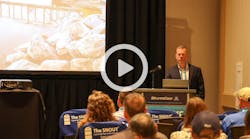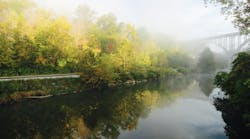Nonprofits Use Forest-Resilience Bond to Tackle Wildfire-Related Erosion
The nonprofits World Resources Institute and Blue Forest Conservation have teamed up to develop the first forest-resilience bond. The two groups have gathered nearly $4 million from private investors to fund forest resiliency efforts that will potentially ease the risk of drought and reduce wildfire risks, such as erosion, mudslides and flooding.
Beginning this spring, teams in the Tahoe National Forest in California will cut down small trees and burn off undergrowth across 5,000 acres, seeking to minimize fire risk and, ultimately, erosion. The project marks the first of its kind to seek private investors for forest resiliency projects with the goal of turning a profit. The long-term bond requires private investors to fund the forest-thinning work upfront, but be replayed over time with interest by public agencies or other entities that support the work but cannot afford to pay for it all at once, according to the Los Angeles Times.
Investors include CSAA Insurance Group, Calvert Impact Capital, the Rockefeller Foundation, and the Gordon and Betty Moore Foundation. Investors will earn 4% interest, greater than a 3% government bond, to be repaid through the Yuba Water Agency, a public water utility, and a grant from the California Department of Forestry and Fire Protection.
While the financial incentive has pushed investors to contribute, increasing forest-resiliency is considered a long-term investment to some.
“To the extent we can reduce the risk of wildfire in California, that’s good business for us,” said Linc Walworth, vice president of investments for CSAA, an insurance company that had 5,000 wildfire-related insurance claims last year, to the Los Angeles Times.
“There are air quality benefits, water quality benefits, job creation,” said Jacqueline Westley, a senior investment officer at Calvert. “It’s exactly the sort of thing we want to invest in.”
Yuba Water, the water utility helping to repay the bonds, wants the fire bond idea to be successful and to help corporations see the mutual benefit of a more resilient ecosystem.
“We need to identify all the beneficiaries and help them recognize the value of forest improvement work,” said Willie Whittlesey, the agency project manager. “We’re willing to help launch this thing so we can show it works and hopefully identify other beneficiaries so we can do this on a larger scale throughout the watershed.”


